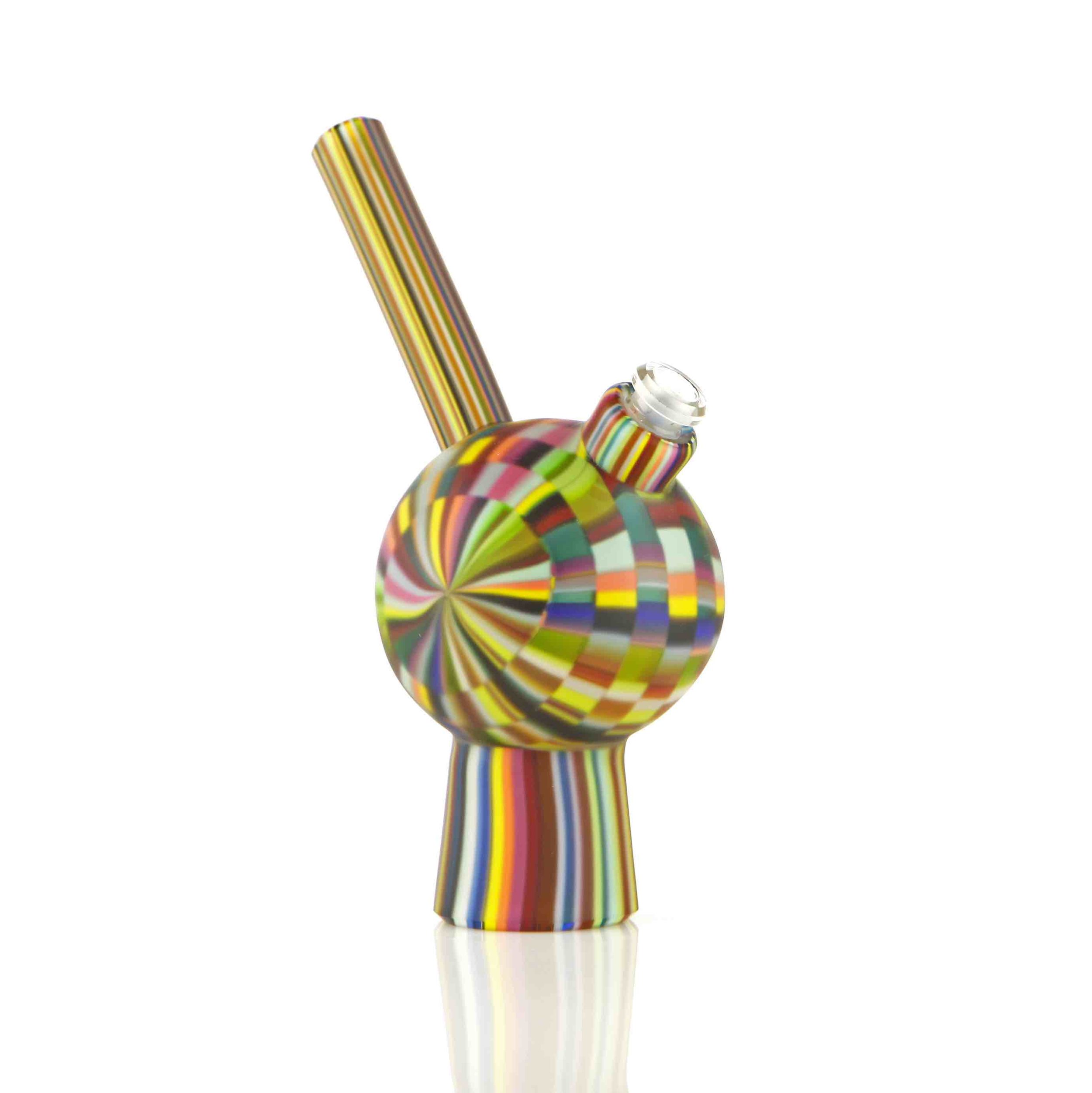Chronic Heat: A Joint Venture
Artists Make Soft Glass Pipes and Borosilicate Rigs in the Hot Shop
April 20 & 21 • 10am-5pm
Although the Pacific Northwest is renowned for its hot glass community, a portion of these artists have sometimes been overlooked in the conversation. The greater pipe community also has its origins in the region, and developed alongside the rise of soft glass.
In 2023, Museum of Glass accepted into its Permanent Collection three pieces from Ryan “Buck” Harris of Buck Glass. These pieces (see below) – usable glass pipes painstakingly flameworked by the artist – are the first of their kind that have a permanent home at the Museum. Now, with the mission of further exploring this important corner of the glassmaking world and elevating these artists, Museum of Glass is hosting a collaboration of soft glass and borosilicate (hard glass) pipemakers in the Hot Shop for Chronic Heat: A Joint Venture on April 20 and 21. Moving past preconceived notions of this approach, Museum of Glass is thrilled to present this complex, and once taboo, art form which bridges the gap between functional and fine art.
Working on one side of the shop, soft glass pipemakers will take the stage to demonstrate their approach at the furnace. On the other side of the shop, artists will demonstrate how modern borosilicate glass rigs are made.
Demonstrations will take place both Saturday and Sunday from 10am to 5pm. On Sunday at 1pm, the Museum will host an Artist Talk with Joe Tsoulfas (BigSpin Glass), where he will discuss the history of the pipemaking industry that started here on the west coast.
Regular Museum admission is required.
We will see you in the Hot Shop!
Demonstrating Artist List
Nic Asturino (Annealed Innovations)
Jeff Ballard (Soft Serve Glass)
Chris Carlson
Patricia Davidson
Jason Elliot (JLE Glass)
Scott Moan (Scomoanet)
Cameron Tower
Turtle Anuweh (Turtle Time Glass)
Joe Tsoulfas (Bigspin Glass)
Edgar Valentine
Soft Glass vs. Borosilicate Glass
Soft glass (soda-lime glass) has a relatively high coefficient of expansion. This type of glass, melted in the furnace and then shaped and sculpted, is what one most commonly sees used in the Museum Hot Shop. It melts at lower temperatures but is more sensitive to extreme heat and cold and is therefore susceptible to shock. Some pipes will be made with soft glass during the demonstrations.
Borosilicate glass (hard glass) has a relatively low coefficient of expansion, which makes it resistant to thermal shock. This allows the glass to withstand extreme changes in temperature. Borosilicate glass must be melted at a much higher temperature than soft glass but allows the artists using it to be very exacting. Glass rigs are often made with borosilicate glass.
Work from Demonstrating Artists Jeff Ballard (Soft Serve Glass) and Joe Tsoulfas (Bigspin Glass)
New to the Museum Permanent Collection
The pieces below by Ryan “Buck” Harris of Buck Glass (with help from Scott Deppe of Mothership Glass) are the first examples of functional glass pipes to be accepted into the Museum’s Permanent Collection.
Credits
Ryan "Buck" Harris (American, born 1981). Triceratops Skeleton, 2022. Flameworked glass; 9 × 5 × 20 in. (22.9 × 12.7 × 50.8 cm). Collection of Museum of Glass, Tacoma, Washington, anonymous gift from @thelandlordscollection (2023.11.3). Photo by Lucas Reilly.
Ryan "Buck" Harris (American, born 1981). Inside functional glass made by Scott Deppe (American, born 1976), Mothership Glass. Jaguar, 2022. Flameworked glass; 7 1/2 × 4 × 8 in. (19.1 × 10.2 × 20.3 cm). Collection of Museum of Glass, Tacoma, Washington, anonymous gift from @thelandlordscollection (2023.11.1) Photo by Lucas Reilly.
Polar bear skull made by Ryan "Buck" Harris (American, born 1981). Exposhere design made by Scott Deppe (American, born 1976). Exposhere design by Mothership Glass. Polar Bear, 2022. Flameworked glass; 7 × 5 × 4 1/2 in. (17.8 × 12.7 × 11.4 cm). Collection of Museum of Glass, Tacoma, Washington, anonymous gift of from @thelandlordscollection (2023.11.2). Photo by Lucas Reilly.













